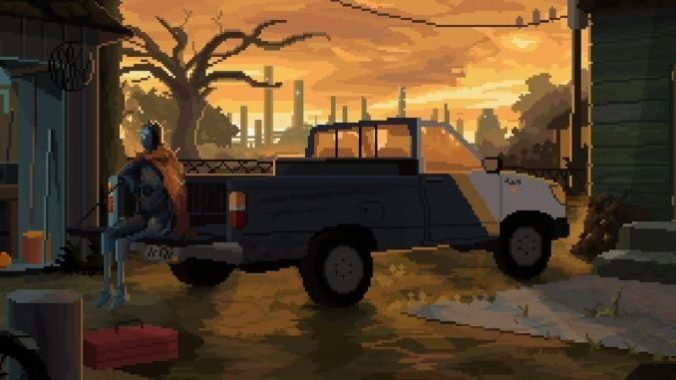Locally Focused Art Like Norco Offers a Crucial Alternative to Corporate Media

I love Norco’s maps. They seem like a bird’s-eye-view, what you might see looking out of an airplane. That gets filtered through the haze of living somewhere, of having that temporal awareness that comes from time spent in a particular place. Even Norco’s more exact maps, the charts of the Bayou, only function through some mystic element. They hide much more than they reveal. Critic and developer Lotus calls Norco “a map to a place that no longer exists.” When I think of my hometown, I too can imagine that elevated view, seeing the material of my life and my friend’s lives spread out over a grid of concrete. The maps in Norco represent the hazy awareness of a hometown (but probably not yours and definitely not mine) driven into exacting logic drawn over the gory, plastic fragments of our lives. It’s that poetic and exacting resonance with “the real” that makes Norco so admirable.
Of course, Norco has plenty of “universal” elements. Many of us know what it is like to grow distant from your parents, to return to your hometown where everything is different and yet nothing has changed, or to find old friends who are not who you thought they were. But like anything with real poetry, what makes Norco’s approach of these themes compelling is the particularities of its approach, the details that could only come from its namesake: Norco, Louisiana.
I cannot speak to the exact details of the setting and there is obviously plenty of (science) fiction in Norco’s bones. However, the project was born out of a multimedia project incorporating oral history and archival deep-dives. Developer Yuts grew up in Norco and the game holds some “slightly autobiographical details.” Although it has reached a broader audience, Norco can be understood as local art. The game has plenty to say about America or the internet or labor or industry, but crucially, nothing is a stand in. While items and ideas have meaning or subtext, they are so rarely symbolic—not even protagonist Kay, with her blank, unreadable face, which functions more as an obstacle to, rather than an aid in, player identification.
Norco doesn’t particularly remind me of Kentucky Route Zero or even other point-and-click adventures. Rather it conjures the multitude of local art from Utah which has resonated with or provoked me. Norco reminds me of this video, basically an ad for Steven L. Peck’s collection Tales From Pleasant Grove. It’s delightfully strange and funny, and captures the paranoia around particular details. Pleasant Grove is only a few miles outside of Provo. I’ve seen the pipes that he talks about, heard the strange noise he references. The video is not merely funny to me, it resonates.